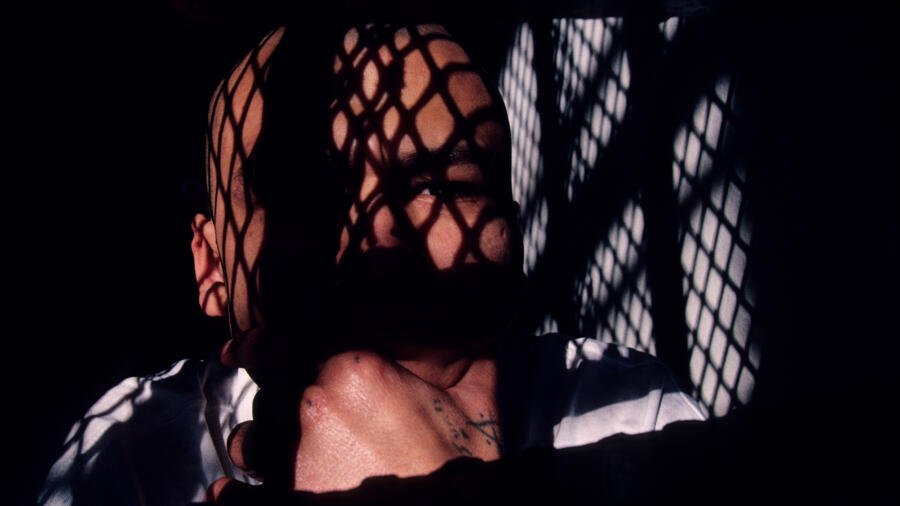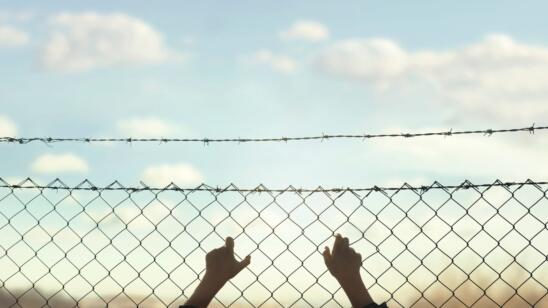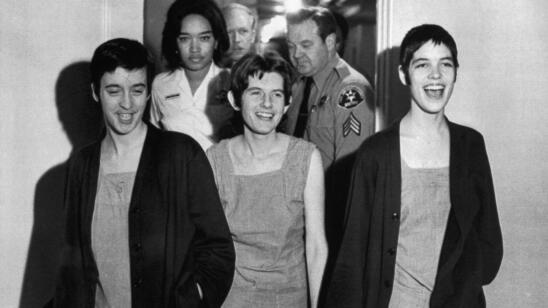The “supermax” U.S. Penitentiary Administrative Maximum, also known as ADX Florence, in Colorado, holds the most dangerous federal prisoners: gang leaders, those who’ve murdered fellow prisoners or prison guards, high-profile criminals, those who could pose a threat to national security and more.
ADX Florence opened in 1994 as the result of the 1983 murders of two corrections officers at the hands of convicts Thomas Silverstein and Clayton Fountain. The murders also resulted in the immediate use of isolation and solitary confinement to punish prisoners.
In his book, No Human Contact, former reporter Pete Earley examines what happens to prisoners in isolation and solitary confinement, and whether such methods can lead to rehabilitation.
Earley met Silverstein in prison in 1987 and the two communicated until Silverstein’s death in 2019. Earley never met Fountain, who died in 2014. He relied on criminologist David Ward and Father W. Paul Jones, who served as Fountain’s spiritual adviser, to tell Fountain’s story.
A&E True Crime spoke with Earley about what life is like for inmates in supermax prisons, whether preventing criminals from having contact with others leads to rehabilitation and whether Silverstein and Fountain evolved.
Why were Silverstein and Fountain in prison?
Fountain was sent to prison for murdering his commanding officer in the Marine Corps, then in prison he murdered three prisoners. Silverstein was sent to prison for bank robbery, then was convicted of murdering a prisoner—the court later overturned that. Then he murdered another prisoner.
[Stream episodes of 60 Days In in the A&E app.]
Both were associated with the white supremacy gang Aryan Brotherhood. Silverstein was a ‘shot caller,’ while Fountain was an associate who had not yet gotten full membership.
In October 1983, they separately murdered two correctional officers on the same cellblock in the federal penitentiary in Marion, Illinois.
What happened in the wake of the murders?
Immediately after the murders, the Federal Bureau of Prisons separated them. Fountain went to the United States Medical Center for Federal Prisoners in Springfield, Missouri, and Silverstein went to the United States Penitentiary in Atlanta, Georgia. The Bureau of Prisons came up with a draconian punishment: isolation for the first nine months.
What did that look like?
Both men were stripped down to their boxer shorts, placed in cells painted in white, with a toilet, sink and mattress, with the lights on 24 hours a day and a solid steel door. They were not granted any contact with the outside world: no books, magazines, TV, radio or letters from their families. Their only contact were prison officers who did not talk to them.
What happened after nine months?
The prison guards discovered that you cannot control another person if you take everything away from them.
Silverstein would not give back his food tray [to the guards], and you can’t deny food to prisoners. So, as a guard, do you want to get into that cell and fight with him? Or would you rather give him art supplies or letters as an incentive for good behavior? It’s all about control.
After that, Silverstein was held in isolation for about 30 years, far away from other prisoners, in his own special cell, only seeing the guards. Fountain was in a cell, away from everyone else, for 21 years.
How did they handle that?
Silverstein practiced mind travel. He would sit and remember in great detail incidents of his life that were pleasurable. He also would do pushups and sit-ups. He asked for a Bible and eventually, one was slipped through his cell. He was largely illiterate, but taught himself to read and write by reading the Bible, and later became a Buddhist.
He later found purpose in life through correspondence and through his artwork. Silverstein survived on hate—he was not going to let the Bureau of Prisons destroy him.
Fountain, when he was granted privileges, took educational courses and got a degree. He had girlfriends and became very religious. Before he died, the Catholic Church was going to accept him as a Trappist monk and he was going to practice silence.
What were the repercussions of the murders they committed?
There were dramatic changes [to prison procedures] because of Fountain and Silverstein. [From then on] when a guy was taken out of his cell, you had to have three officers, handcuffs and a belly chain.
Eventually there was the first supermax prison. The Bureau of Prisons has six levels of prisoners [based on severity of the crime], and [then] Federal Bureau of Prisons Director Norman Carlson believed the prisoners in levels 5 and 6, the murderers, killers and predators, were professional prisoners. He also believed that prisons are not responsible for rehabilitation.
After Fountain and Silverstein murdered the corrections officers, punishment became part of the Bureau of Prisons. The idea was, ‘If you act up, we are going to send you to supermax, and you have to earn your way out.’
What is life like for prisoners in supermax?
Prisoners in solitary confinement have a TV in their cells and get letters. If they flush the toilet, they can yell to each other [through the toilet] to communicate, and they can also pass notes to each other.
There are also prisoners in isolation in an area called Range 13, where Silverstein was kept, which is like a dungeon. There is a big argument in the mental health community about whether isolation causes permanent mental health damage. Silverstein was incredibly mentally strong but had moments when he considered suicide.
What about Fountain?
[Criminologist] Ward talks about how Fountain preferred isolation. He never grew up with friends and, in the prison environment, he was always worried about someone attacking him. So having a solid door and being isolated didn’t bother him. He could do his studies; they gave him access to classes and a priest would come by to talk to him.
[Former Bureau of Prisons Director] Carlson described Silverstein and Fountain as being part of ‘a very small subset of the federal inmate population that shows absolutely no concern for human life.’ Do you agree with that?
I would phrase it as, ‘There is a subset who has no qualms about killing someone else when it serves their purpose.’
Silverstein said murder is a serious subject and you don’t do it without a reason. These guys in prison who kill [said they] had a specific reason: either they were being threatened, or they wanted to intimidate someone, or they had a grudge. Carlson’s quote makes it sound like they got up in the morning and decided to kill someone.
Does preventing criminals from having contact with others lead to rehabilitation?
I never give up faith, but the recidivism rate is about 60 percent. [Editor’s note: analysts for the Texas Legislative Budget Board found in 2015 that prisoners released after solitary confinement are rearrested at a 25 percent higher rate than those released from the overall prison system].
I think isolation and solitary confinement is not intended to rehabilitate people; it’s intended to control their behavior. It’s about fear and intimidation. I also think Silverstein and Fountain were so damaged in their youth—both came from highly abusive families—that the only way they would stop doing what they did is old age.
So how should prisons deal with such inmates?
Part of the reason I wrote the book was to raise questions about that—and I don’t have the answer. How do you control someone who is willing to kill? I know that Carlson’s view was to isolate them, so they can’t hurt staff and others.
Do you think Fountain and Silverstein evolved as human beings?
I like to say they found purpose in their lives. Silverstein survived by hate—he hated the Bureau of Prisons—although that doesn’t mean he wasn’t capable of love. We became friends over those 33 years.
Fountain took the opposite route: he became incredibly religious and he asked for forgiveness. Those in the corrections system believe neither man reformed.
Did you find Silverstein to be a liar at any point?
No. He wanted to be taken seriously. He appreciated my books but said they were too pro-corrections.
When prisoners get violent, they can get ‘four-pointed’: tied to a slab, chained, each limb extended. He said to me, ‘You write about that, but you have never lived that. You have never sat there, dying of thirst and hunger, urinating and peeing on yourself, having bugs crawl over you, mice crawl over you, a fly crawl up your nose. Just the inhumanity…'”
So, what are you going to do with these violent prisoners? Personally, I don’t think four-pointing is humane, but I also have never had prisoners throw urine and feces in my face. I never had a prisoner try to stab me. I’ve been so close to it that I see both sides.
Related Features
What’s It Like to Be Executed in the United States?
Chris Watts, David Berkowitz and Other Infamous Killers Who Found God in Prison


